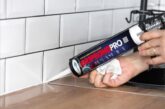
Martyn Andreoli, national sales manager at Cistermiser, discusses some of the market-leading solutions available that will increase water efficiency.
Demand for water in England and Wales is approximately 14 billion litres a day and it is predicted that England will need an extra 3.6 billion litres per day by 2050 to avoid shortages. However, this is already becoming a reality in some regions – for example, in June this year, households and schools across Kent and Sussex experienced low or no water from their taps.
It is imperative that action is taken now to reduce water use, and particularly water wastage. It is crucial for these buildings to be designed and managed with water efficiency in mind – not only does this help to protect precious water supplies, but it also enables organisations to meet environmental standards and targets, reduce their water bills and lower their carbon footprint (around five to six per cent of UK greenhouse gas emissions derive from our use of water).
Although some organisations require water for specific production or operational purposes, in the majority of commercial and public sector buildings it is being used in toilets, taps and showers – so washrooms are an area where significant headway can be made.
While architects, specifiers and contractors will usually be responsible for selecting washroom solutions for new commercial developments and major refurbishment projects, a commercial plumbing professional can be best placed to provide advice and recommendations for ongoing washroom maintenance and upgrades in existing buildings.
Wasted water
Not only are plumbers ideally positioned to educate on the latest innovations and how different technologies function, but – by equipping themselves with some additional knowledge – can also provide statistics on water savings and payback periods. In addition, plumbing installers can carry out inspections to identify faulty and leaking appliances and have the skills required to quickly resolve such issues. As well as helping the environment, plumbers will be adding value to their service – enhancing their reputation and even differentiating themselves from the competition.
Toilet flushing solutions are an ideal starting point. According to South Staffs Water, almost half (43 per cent) of water consumption in office-based businesses is used for flushing toilets. Water wastage from toilet flushing can unfortunately be prolific. Dual flush toilets are often recommended, as they are designed to reduce the amount of water used (selecting the smaller flush can save around two litres of water on every flush). However, plumbing installers should be aware that between five and eight per cent of toilets are leaking – and they are mostly dual flush types. In fact, ‘leaky loos’ are wasting around 400 million litres of clean, fresh water every day.
Dual flush toilets tend to leak because the flush seal, which is situated below the cistern’s water line, can degrade due to scale and debris being present in the water. Water trickles from the cistern into the toilet bowl – often without the leak being detected. Our EasyflushEVO dual flush valve is designed without a flush seal below the water line, preventing leaks. Each unit can save up to 146,000 litres of water per year and a return on investment can be achieved in just seven months.

Water efficient solutions
Many UK homes also have leaky loos. Addressing this is essential, given the scale of water efficiency action required and the government’s proposed targets to lower an individual’s demand from 144 litres a day to 122 litres a day by 2038. We are therefore committed to investing and developing EasyflushEVO further.
Uncontrolled urinal flushing is another contributor to water wastage in commercial and public sector buildings. While no longer permitted for new installations, intermittent flushing is still common in many buildings and could be using upwards of 850 litres of water a day. Retrofitting mains-flushing, sensor-controlled valves (or infrared or hydraulic control valves if a cistern is installed) enables flushing to be more accurately managed and can achieve a 75-80 per cent saving in water use. The payback period for our mains-flushing sensor-controlled valves is just eight months.

Further water savings can be achieved by upgrading conventional manually operated taps and showers to timed-flow or sensor-activated versions, which ensure water is used only when required. Meanwhile, modern taps and showers are supplied with flow regulators – they lower water use while having a negligible impact on performance.
For businesses and public sector organisations, adopting water efficient solutions has numerous benefits – arguably the most significant impact this has is on our future water supplies. By recommending water saving solutions, plumbing installers are educating and guiding organisations on how to lower their costs and carbon emissions, enabling them to achieve environmental standards while also helping to protect this precious resource.
For further information on Cistermiser visit Cistermiser – Commercial Washroom Flushing Controls.







